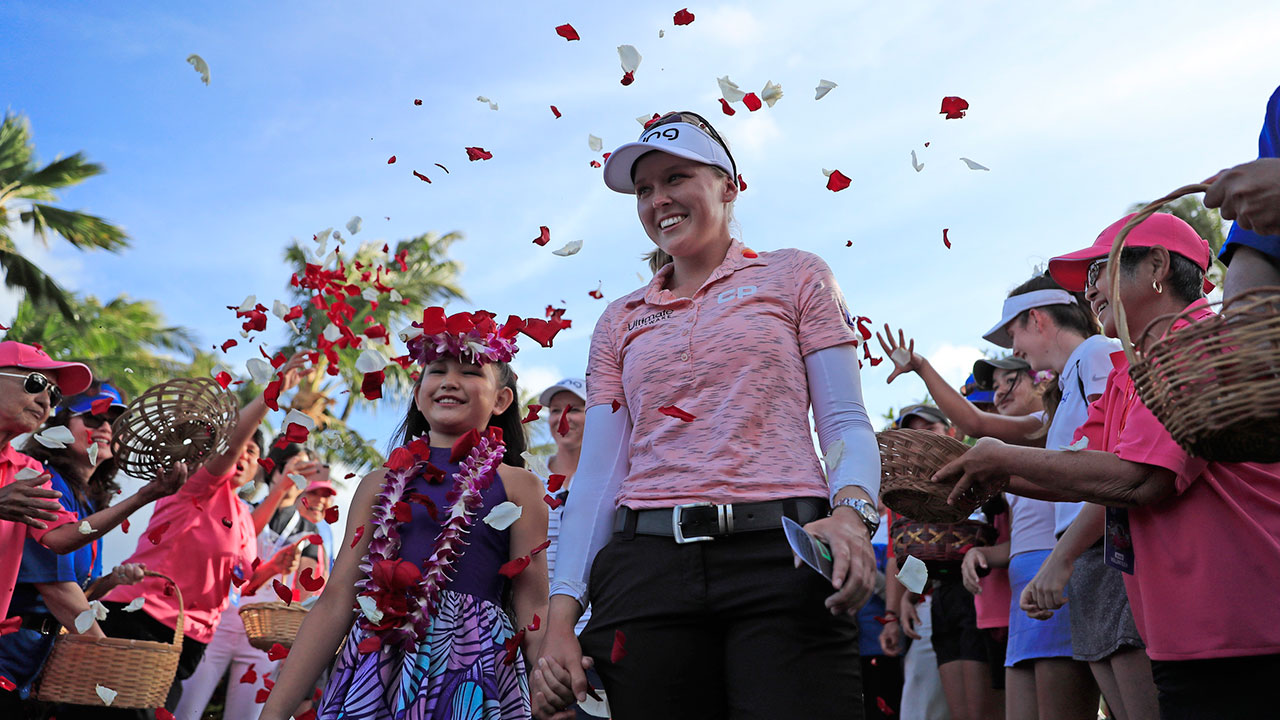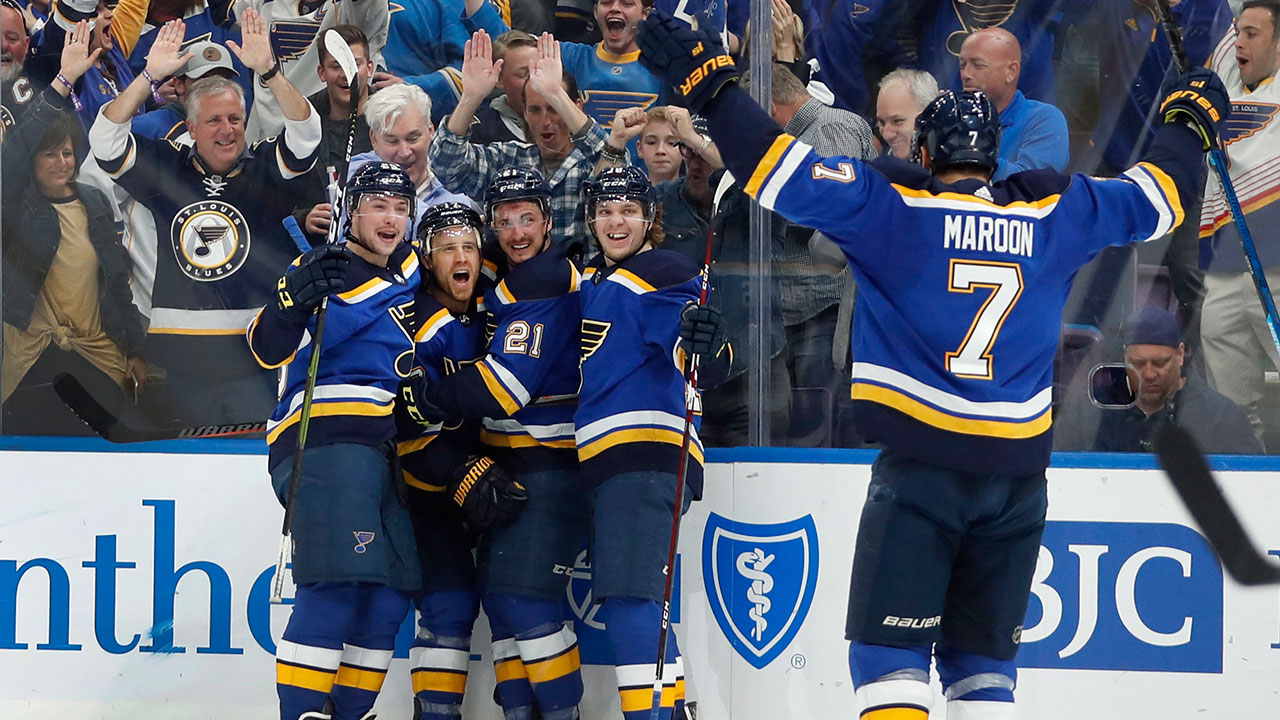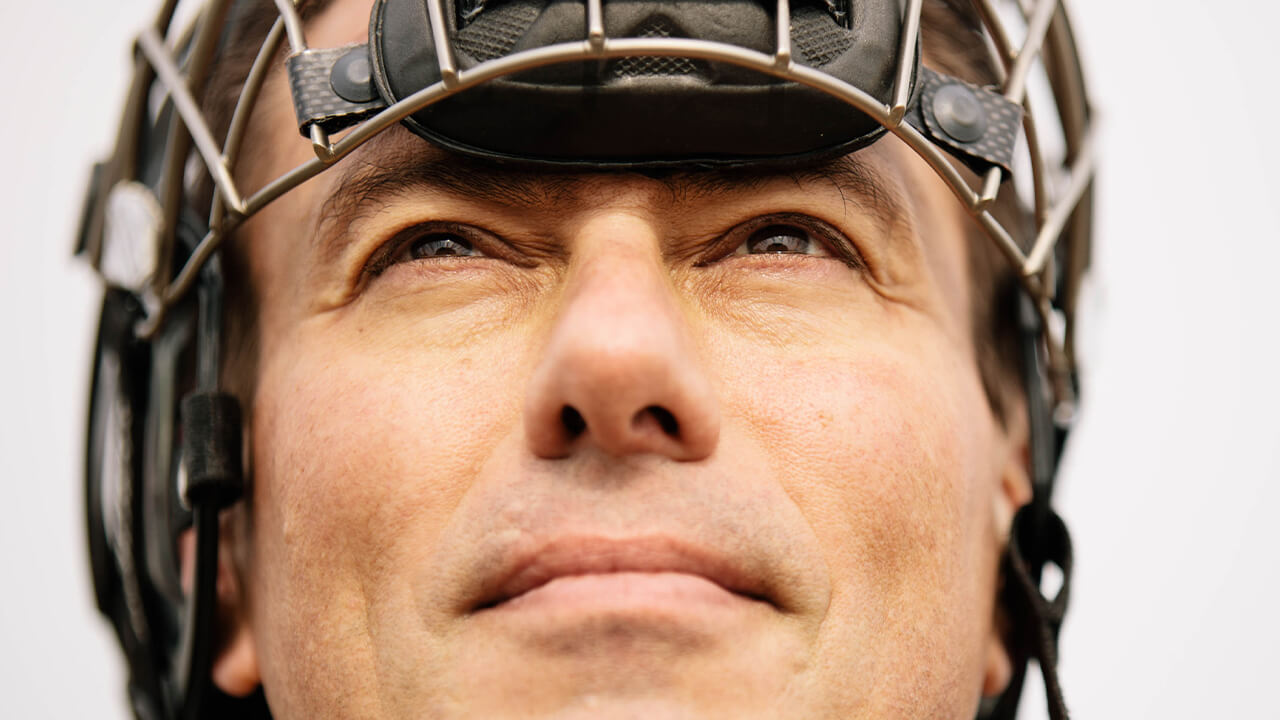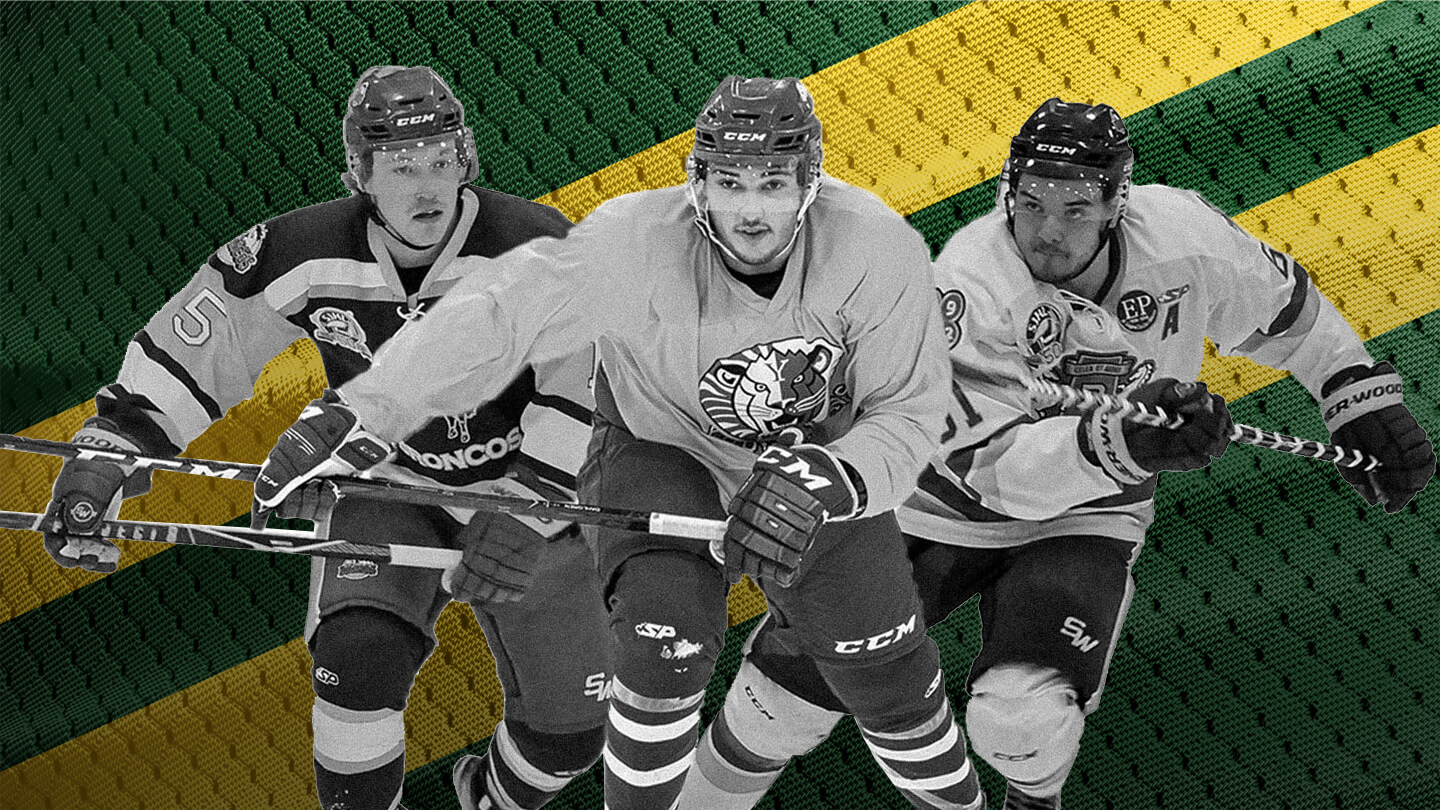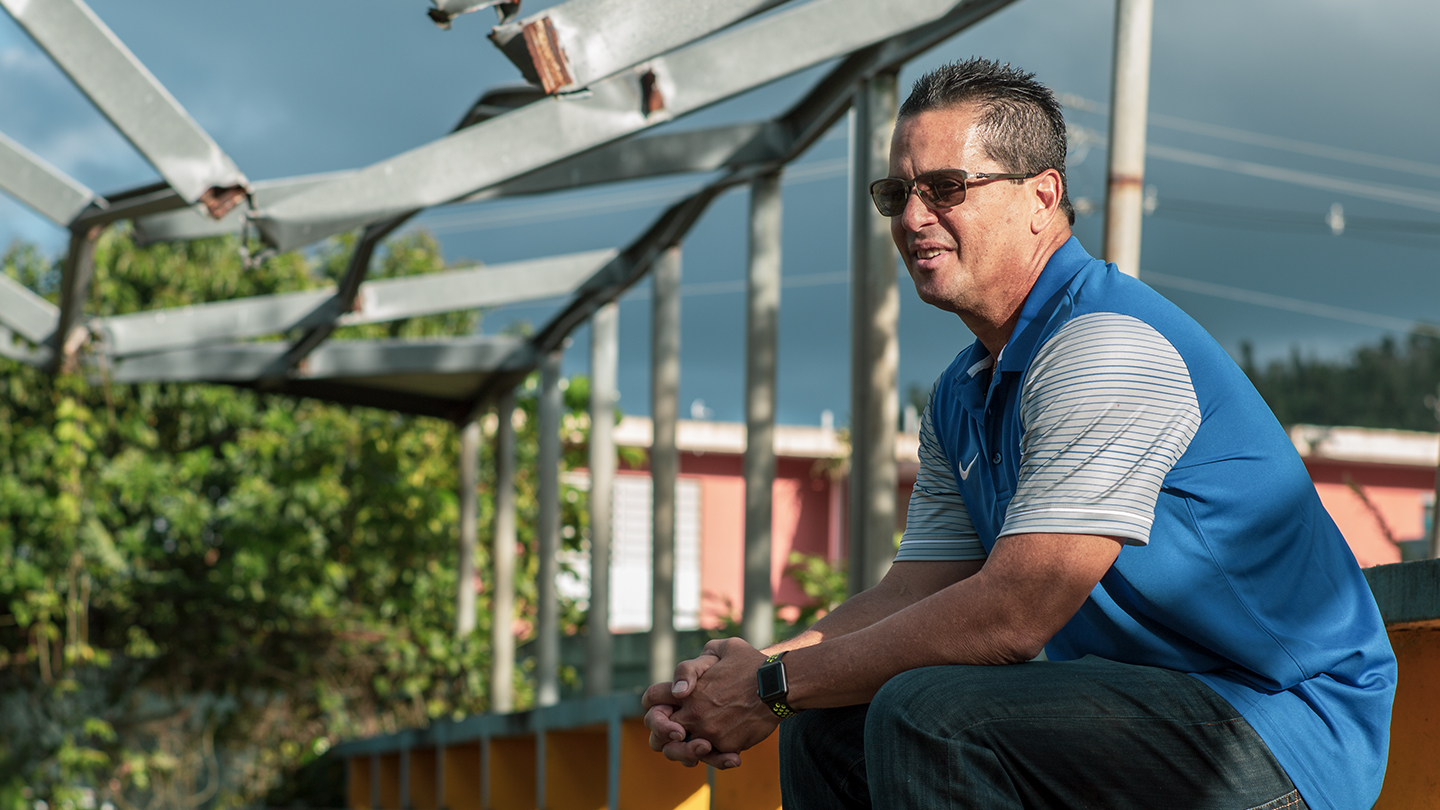I hear they’re building a track in West Virginia,” Jolene says.
“Well,” is all Cal Holland offers in response. It isn’t an affirmation, not even much of a placeholder. If there’s something to say, he can’t think of it.
Whoever programmed the music at Derby Lane drew their last paycheck in 1979 and was never replaced. As Holland flips the pages of his crumpled program and stuffs his betting slips in his pocket, the last cassette plays on an endless, nostalgic loop, tinny through loudspeakers that have survived hurricanes but will soon hit the auction block. “The Night the Lights Went Out in Georgia” fades and Jefferson Starship breaks into “Miracles.” The song cuts out after a couple of bars and a familiar voice cuts in, all gravel and nicotine.
“Two minutes to post-time.”
Back to “Miracles.”
No one has come over to the snack bar since the greyhounds were paraded three minutes ago, so Jolene (who asked that her real name be withheld) has stepped out from behind the counter to talk to Holland, who’s looking a little bedraggled in a golf shirt that has never visited a course that’s not an oval. He has been down working in his kennel on the Derby Lane grounds since dawn. It’s the sixth race of a 15-race program that started at lunchtime. His dogs have been the win leaders at the track the past couple of years. He’s even had the captain of the All-America team, basically the best in show in a season, but none of his elite dogs are running today. No reason to stick around. If there’s collecting to be done on any of the bets he’s laid, it can be done tomorrow. He’s heading home to fix a door that busted off a hinge. He’s going as soon as this one dog runs.
The track doesn’t have a souvenir shop. You can’t buy a postcard that says “Greetings from Derby Lane.” No T-shirts or ballcaps. There was a day but that day has passed. If you’re here now, you’re not a tourist. You might be from somewhere else, but you belong. And if you belong you don’t go for that fake sentimental stuff.
Kids in matching uniforms — deep blue golf shirts and black shorts — walk the dogs from the kennels at one end of the grounds and parade them in front of the grandstand, the length of the home stretch. At the end of their parade, the dogs are loaded for the start of the race. The sun beats down on them. The bettors, all old enough to know better than to dig too deep into their bankrolls, all too old to change, commune with the charts on their programs like rabbinical students with the Torah. A bunch have their backs to the track and stare at television screens with out-of-town races, greyhounds and thoroughbreds. Don’t call them fans. The only fans spin languidly overhead, maybe five revolutions a minute.
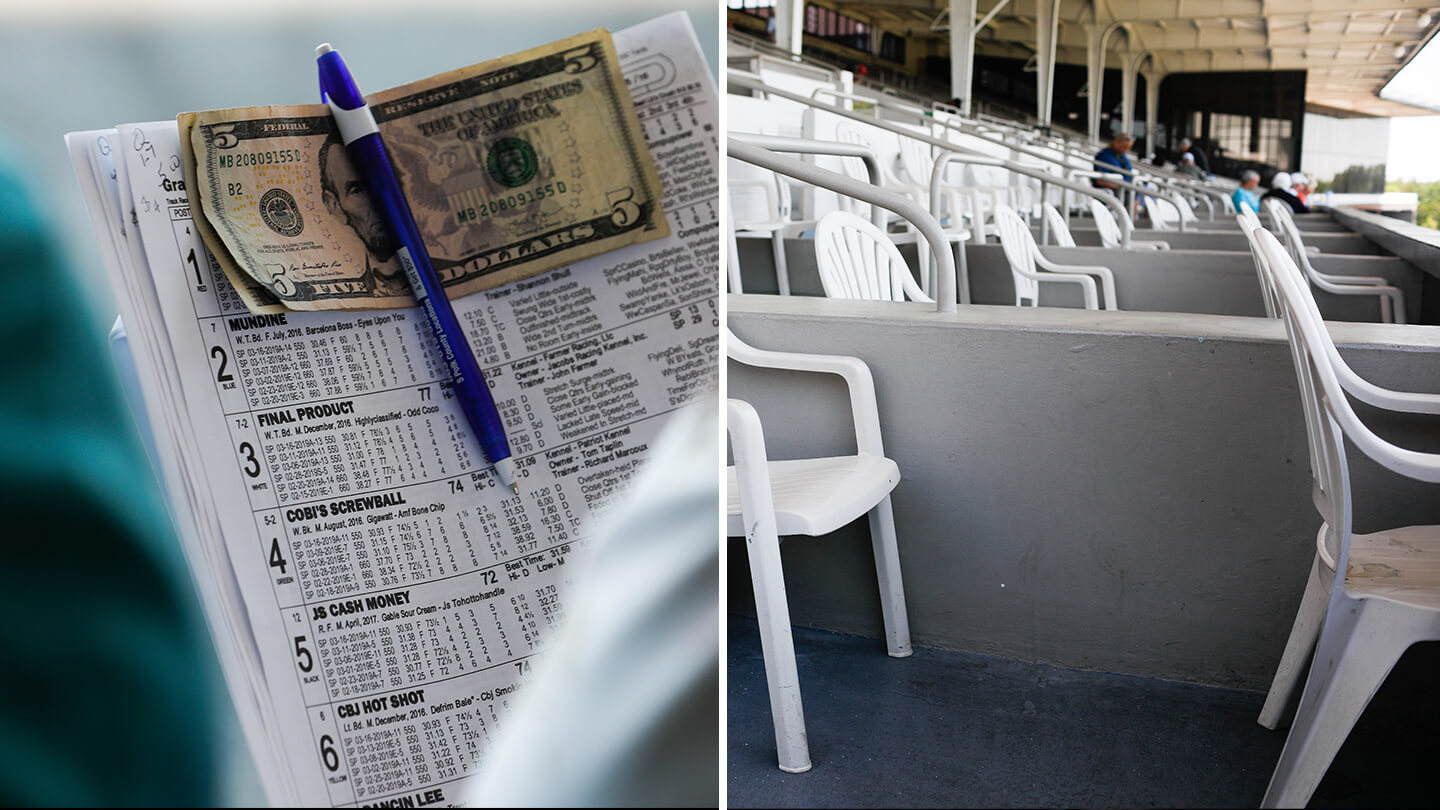
Jolene looks back at the counter and then beyond it at the lifers. She can name them all. She knows their drinks when they’re flush, and that when they’re lean they won’t even buy a box of popcorn when the price drops to 50 cents after the 12th race. Cal Holland gazes out at the tote board. Jolene can’t tell if he’s listening to her.
“There’s the whole court thing, too. They can beat it in court, they say,” she continues.
“Miracles” is down to the last verse. “If only you believe like I believe, baby / We’d get by.”
“They shot those poor schoolkids in Parkland, but there was nuthin’ about that on the ballot,” she says. “They ban racing, but they’ve done nothing about guns. It’s awful.”
That ballot was cast months ago, the vote’s gone and done and it still stings.
Jefferson Starship cuts out again.
“It’s post-time … They’re off and racing. It’s the 3, the 5, the 7 …”
We’ve all seen major-league teams leave town, with tears or shrugs or both. The Montreal Expos are ritually mourned by more people than showed up to most of their games, cherished more in their passing. We’ve seen teams up and fold: We bid you farewell, Cleveland Barons. And we’ve seen whole leagues go under, most recently the Alliance of American Football, whose promos are still airing after its extinction. Rarely does it happen out of the blue. Usually there’s a long sickness before death.
We’ve seen sports wax and wane, go from the front page to footnote. What we haven’t seen is a whole sport just end. Thus is greyhound racing an unusual case. In our lifetime, we’ll see the last greyhound race. When or where, we can’t say with exact precision. What is immutable fact, however, is that the last greyhound race in Florida, the place greyhound racing matters most, will be run in December of 2020. You can mark it on your calendar; those trying to snuff out the sport have already marked it on theirs. So too have those who fought in vain to preserve it.
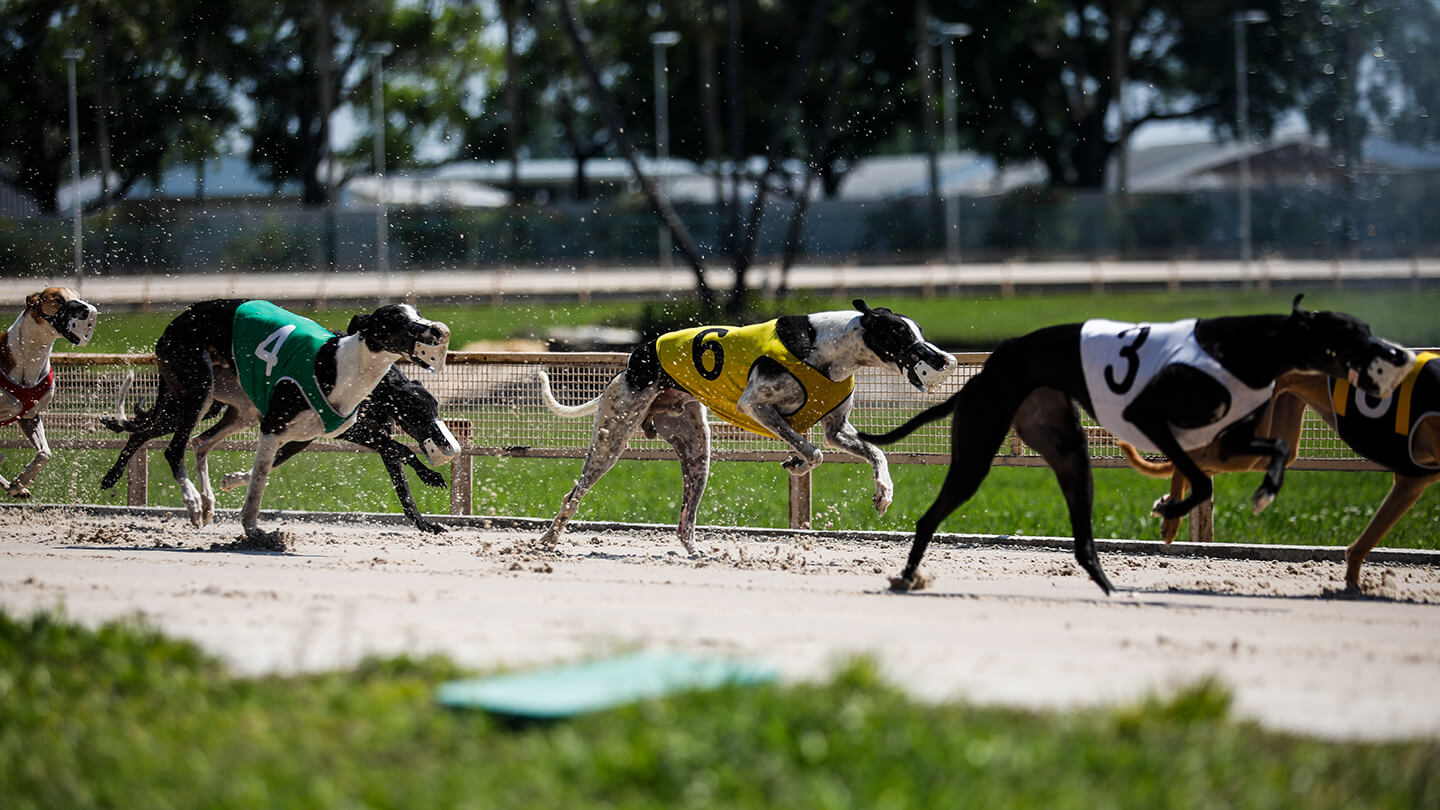
Up until the late 19th century, greyhounds were working dogs, exclusively bred for coursing, to flush out deer and hares for hunters in the U.K. They were raced competitively for the first time in 1876 but only in a straight line and without generating much popular interest. It wasn’t until after World War I and the advent of mechanical hares — the lures — that greyhounds were raced on oval tracks for the first time. The Weaver family was there almost at the very beginning, although not entirely by choice.
Back in the 1920s, T.L. Weaver owned the Pinellas Lumber Co. and several tracts of local real estate, including a couple hundred acres on Gandy Boulevard, across the bay from Tampa. A few local businessmen approached him about buying the land and the timber to build a dog track. When they defaulted on payments, Weaver wound up owning the track, which he named Derby Lane. It opened for business on Jan. 3, 1925, and has remained in the family ever since.
In the early years, Weaver made an end run around a state prohibition on gambling on dog racing with an innovative, if convoluted, plan of quick-flipping: The bettors bought shares in dogs before races and the track bought the shares of the dogs that won, placed and showed after they crossed the line. Gambling in all but name.
Legislation was later slackened and wagering moved aboveboard. The operation expanded, a grandstand was built and Derby Lane became a destination for snowbird celebrities and major leaguers during spring training, especially the Yankees, who played out of St. Petersburg. Babe Ruth posed for pictures with winning dogs and their owners. Other dog tracks opened up around Florida and across the U.S., but Derby Lane was ever the hub.
Greyhound racing never quite reached the profile of horse racing, but it did garner regular coverage in towns with dog tracks — the old St. Petersburg Times offered readers daily results and selections as well as feature coverage. National publications occasionally parachuted in to give it the novelty treatment. Typical of the time, this from Sports Ilustrated’s account of the opening of a greyhound track in 1955: “The dogs themselves lead the lives of dogdom’s royalty. They travel in special trailers, feed on choice cuts of horse meat, and are curried and combed by valets … To earn their keep the greyhounds run twice a week during racing season [and] can make as much as $120,000 in five years for their solicitous masters.” In 1969, attendance at the 35 greyhound tracks in the U.S. topped 12 million, more than the NFL and AFL combined. The patrons didn’t just come for the spectacle, either, wagering more than $650 million on site — the equivalent of $4.4 billion today.
The 1970s soundtrack at Derby Lane evokes those salad days, but even as late as 1988 greyhound racing ranked as the sixth most popular spectator sport by attendance in the U.S., ahead of hockey and pro wrestling. (This didn’t take into account the numbers from several greyhound tracks just across the Mexican border.) On June 29, 2002, bettors wagered $1,317,111 on Derby Lane’s card, the largest one-day handle in the venue’s long history. Nonetheless, dog tracks remained stuck with the image of being horse racing’s poor cousin, and a somewhat seedy one at that. Back in 2000, Derby Lane was used as a location for the filming of Ocean’s Eleven, for a scene where Brad Pitt’s character, Rusty, recruits a geriatric gangster played by Carl Reiner to his crew. This had more than the ring of truth — not many bettors make it out to the track these days, but one in three is a variation on Carl Reiner and approximately the same vintage.
With interest waning over the past 20 years, greyhound tracks have gone out of business and Derby Lane has tried every imaginable promotion to stay relevant. In 2006, the proprietors staged the Derby Lane Million, the richest stakes race in the history of North American greyhound racing. The Million was run again in 2007 but in terms of publicity the second instalment generated a dead-cat bounce and the race was dropped from the calendar, never to be run again. It was effectively the track’s last big swing.
In recent years, Derby Lane seemed to make the news only when proposed as a potential site for a new home for the Rays. The paradox was hard to miss: The home of a dying sport might be given over to a team threatening to leave town. Even the rumours of a possible sale were preferable to the rest of the coverage the track received.
Like other tracks in the U.S. and around the world, Derby Lane faced mounting criticism from animal-rights groups. Media outlets regularly carry stories on the deaths of dogs at Florida’s tracks, which have to report any fatalities to state authorities within 18 hours. Often this coverage in newspapers and on the airwaves followed reports compiled and circulated by GREY2K USA Worldwide or the American Society for the Prevention of Cruelty to Animals (ASPCA), non-profit groups advocating the elimination of greyhound racing. According to their numbers, 3,700 greyhounds raced in the state last year and, on average, the death of a dog at a Florida racetrack is reported every three days — with about 40 percent coming from causes determined to be related to racing.
The outcry spiked in 2017 when a veteran trainer lost his license after four greyhounds in his kennel tested positive for cocaine — the trainer, Malcolm McAllister, claimed that he hadn’t administered the drug to the dogs, but didn’t contest his banishment. So much for “dogdom’s royalty” and “solicitous masters.” When two animal-rights groups, Protect Dogs and the Committee to Protect Greyhounds, successfully lobbied to get a ban on greyhound racing on the Florida elections ballot in November of 2018, McAllister’s case was made-to-order stuff, the prime example of willfully inhumane treatment of the dogs.
The title of the ballot read, simply: ENDS DOG RACING. The more detailed explanation of the proposed amendment followed, reading, in part: “Prohibition on racing of and wagering on greyhounds or other dogs. The humane treatment of animals is a fundamental value of the people of the State of Florida. After December 31, 2020, a person authorized to conduct gaming or pari-mutuel operations may not race greyhounds or any member of the Canis familiaris subspecies in connection with any wager for money or any other thing of value in this state, and persons in this state may not wager money or any other thing of value on the outcome of a live dog race occurring in this state.”
Both the Democratic and Republican candidates for governor got on board in support of the ban. Across the state, the editorial pages leaned the same way. From the Miami Herald: “Dog racing has become a loss leader, a sideshow to slots and card rooms. Amendment 13 allows them a graceful exit from this anachronistic form of entertainment.” That said, the Tampa Bay Times, the newspaper of record in Derby Lane’s market, was onside with greyhound racing’s defenders: “Whatever your view on dog racing, its disposition doesn’t belong in the Constitution. On Amendment 13, the Tampa Bay Times recommends voting No.”
From the break, Derby Lane and other tracks could only give faint chase. The animal-rights groups pushing for YES raised $3.4 million, including $1.6 million from the Doris Day Animal League alone; those campaigning to keep tracks open raised $142,000. Greyhound racing’s defenders might simply have considered donations to the NO side a bad bet.
The ballot proposition did manage to divide usual bedfellows — Fox News talking heads Mike Huckabee and Lara Trump supported YES, while the National Rifle Association and libertarian groups endorsed NO. And while GREY2K and the Humane Society were all-in on YES, greyhound adoption groups, which find homes for former racers, pushed to vote down the amendment.
In the end, the longshot did not come in and the amendment passed by an overwhelming 69-to-31 margin. “It was timing,” Derby Lane president Richard Winning says. “Years back, when this was a popular sport, there might have been a real fight. They went after us because they could. We were low-hanging fruit compared to horse racing.”
The Florida vote will shut down 11 of the U.S.’s 17 greyhound tracks. The only states left with tracks in operation will be Alabama, Arkansas, Iowa, Texas and West Virginia. (Four other states — Connecticut, Kansas, Oregon and Wisconsin — don’t have tracks, but haven’t banned dog racing.)
If it’s any consolation to the proprietors of Florida dog tracks and those in the business there, their state is the latest domino to drop in an international phenomenon. In the U.K., attendances peaked in 1946 at 70 million but have dropped to less than two million annually. In Australia, greyhound racing has been banned in Canberra with punishments of fines and prison time; a ban in New South Wales was implemented before being overturned. “The sport’s threatened everywhere,” Winning says. “They’ve really come after us.”

About an hour before the first race on a noonday card, Jim Peake walks up the steps to the back row of the upper bowl of the grandstand, past a few thousand empty seats that will remain unfilled. He makes a harrowing climb up sharp-rising stairs to the grandstand’s roof and then crosses through the reflected heat to his office, the announcer’s booth. He looks through the program for the races ahead and powers up the TV monitor that he’ll go to for replays of close finishes.
This has been the languid but steady rhythm of his life, long days with 20 races starting at lunch and then another card at night. He could find his way up here with his eyes closed, on feel alone.
“Just a minute. I’ll do this,” he says after settling in his seat. He clears his throat with a professional cough. “And now Hareson Hare is on the move…”
Hareson Hare is the name of Derby Lane’s lure, the one the greyhounds will chase for 550 yards, a lap and a quarter of the track. Every track has a nickname for its resident mechanical rabbit and the origins of “Hareson Hare” have been lost in time.
“They’re off and racing.”
Half a minute later, the winner crosses the line. “It’s Kentucky Fly.”
Peake flips the switch to kill his mic. “That’s the 30-second blast,” he says.
For Kentucky Fly, it’s precisely 31.45 seconds. Five seconds after that, Fly and the rest of the dogs in the field are crowding around Hareson Hare, which has ground to a halt not quite halfway around the bend.
“The vote, the closing, it’s a sad story,” Peake says. He sips a Coke. “Nobody is talking about it. For me, I was hoping we’d get 100 years here — we’re at 94 now. I was hoping for 100. That was my goal. I’d have my 30 years here — I’d be 65, 66 or whatever. Now I’m going to be short, going to have to find something else. I’d have my retirement and my health care if I made it to 65. Now I’m going to be short to get Medicare.”
Again, the paradox: Gambling is generally not good for your health, but the closure of Derby Lane will be hazardous to Peake’s and that of the other long-time employees in their 50s and early 60s who might find the job market tight. More than 800 people used to work at the track but these days it’s a bit over half that number; Derby Lane hasn’t finalized its plans yet, so there’s no knowing how many will still have jobs, but the closure of dog tracks across the state will snuff out 5,000 jobs, if not more.
If everything goes off as scheduled, on Dec. 31, 2020, Peake will be in this booth for the last race at Derby Lane. He might not be the one who turns out the lights, but his voice will be the last heard before the grounds fall silent. There will be one last 30-second blast, a reading of the results and payouts, and then a final good night followed by a flip of his mic switch.

For Peake, the dread commenced even before the plebiscite. It’s a story he can’t cram into half a minute: “I went in front of the commission and I talked — they give you two minutes. My gut told me they had already made up their mind that this was going to be on the ballot and that it was going to be phrased in a way that was going to make it real hard for us. I looked over at the guys who sit on the commission and they were asleep … I mean, they only meet once every 20 years. And it was strange the way it went down. You weren’t allowed to clap or make a sound to show your support. You had to hold up a card — green card if you agreed with the speaker, red if you didn’t. All the Grey2K people, the animal-rights people, filled up all the seats up front and all of us dog people were in the back.
“When I went up and started to speak to the commission, I talked about the people who work here and the fans that come down. I get in about a minute and look over my shoulder and there’s all these Grey2Ks waving their red cards. And it was so weird — they didn’t send you up in any order. It wasn’t a bunch of dog people speaking and then a bunch of the Grey2Ks. It was any amendment — I was up after a guy who was talking about voting rights for felons, next guy was talking about God knows what and it all dragged on for hours. I was there for 12 hours before I got to talk. I just had a bad feeling, even before I got up there.”
It might seem hard to be nostalgic about history that plays out 30 seconds at a time, but, for lifers, whole worlds live in the tenths, even hundredths. A reverence creeps into Peake’s voice when he talks about his favourite dogs, whose photographs hang in places of honour on the walls of his office. First among them is Talentedmrripley, Derby Lane’s greatest champion in the modern era. A racing prodigy, Ripley set records and won major stakes races by margins up to 14 lengths — like Secretariat, in race films he runs out of the frame ahead of the field. “When they put Ripley in the Greyhound Hall of Fame up in Abilene, Kansas, he went there,” Peake says. “He got moved and became the ‘greeter.’ The Hall became his home.”
Another greyhound who stares down at Peake is Flying Coal City, winner of greyhound racing’s Triple Crown in 2010, as All-America team captain and winner of the Rural Rube (best sprinter) and Flashy Sir (best distance) awards. Peake used to urge people to “hop on the Coal Train.” He has an old Christmas card tacked up, one that features Flying Coal City in complete Noel motif. Peake catches himself before reliving too much history, likely because that Christmas card was sent to him in sunnier days by Malcolm McAllister, the banished kennel owner and the trainer of the champion greyhound.
Though he didn’t see it coming, the passing of Derby Lane seems all too familiar to Peake. Ways of life folding, disappearing, is an almost eerily recurring theme. He grew up in Charleroi, Penn., a small town on the Monongahela River, and after high school worked in the same steel mill as his father for 10 years — the only time you can tell he’s not from Florida is when he says “steel” and it comes out “still.”
“The steel industry got hit hard in the late ’70s and ’80s, especially the Mon Valley, and the mill where I worked … now it’s just a park,” Peake says. “The mill’s completely gone, like a whole ghost town, and 5,000 jobs just went.”
With prospects disappearing in Charleroi, Peake wound up in Florida and landed a security job at the jai alai fronton in Tampa. Even though he had no formal training, he was able to talk his way into an announcing job. A few years in, and with the jai alai operation in Tampa sinking as a business concern, Peake got a tip that Derby Lane was looking for someone to call races. “I knew a bit about the sport,” he says. “Back in Charleroi, we used to drive down to the greyhound track in Wheeling, [West Virginia]. I passed the audition. That was 24 years ago.”
He’ll see a 25th season but no more. He points to a black-and-white photo from the ’70s on the wall, a bunch of 10- and 11-year-old kids leaning over the rail at Derby Lane, yelling. “That’s the mutt race — a race for kids bringing in the family pet — and that’s my wife there in the middle,” Peake says. “She has worked here at the [parimutuel] window all her adult life. When they just ran a six-month meeting here, she’d go down and do stretches at the track in Sarasota or somewhere else. She’s going to be okay [with the closure] — they’re going to keep off-track betting here. But there’s only going to be photos and memories from a whole way of life here.”
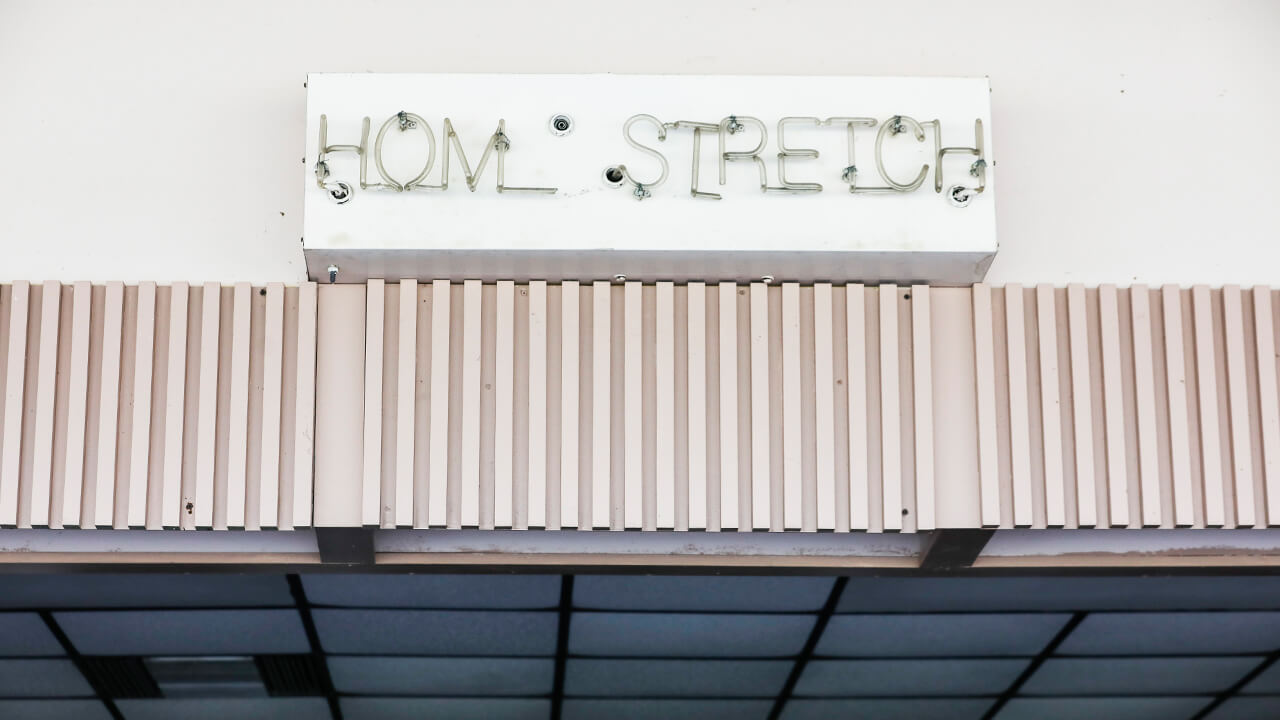
Richard Winning’s mother was the granddaughter of T.L. Weaver, the founder of the track. Winning’s grandparents on his father’s side moved from Michigan to St. Petersburg to work for Weaver on the real estate side of his operations. Winning never intended to go into the family business, but 44 years ago he took a part-time job in Derby Lane’s personnel department and has worked here ever since, becoming the president of the racetrack in 2015. Four members of the Weaver family, past proprietors of Derby Lane, are in the Greyhound Hall of Fame, and presumably Winning might be so honoured at some future date. The window is closing to do so while the family business remains in business.
“It’s been a great run and it’s hugely disappointing for me to think that it will be dark here soon,” Winning says. “So many people, many of them good friends, will be out of jobs. The ones who want to stay in racing, they’re going to have to move away. But, really, it’s a disappearing way of life — maybe [the end] seemed inevitable sometimes, but I never thought I’d be around to see it or that it’d happen on my watch.”
Winning suggests that Derby Lane and particularly the racetrack’s past president Arthur Weaver Jr. were well out in front on the protection of greyhounds. It had long been greyhound racing’s darkest secret that many dogs that either didn’t show the speed for the track or had run their last races were shipped to labs for medical experimentation or put down, often inhumanely. Ron Walsek, a trainer at Derby Lane, founded Retired Greyhounds as Pets (REGAP) in the early ’80s and found homes for thousands of dogs. Weaver Jr. supported Walsek’s initiative and the dozens of non-profits that followed the trainer’s lead in the years since. Seemingly every community across the state has at least one chapter of Greyhound Pets of America. “We had support from [Greyhound Pets of America] and all the other adoption groups for ‘NO on Proposition 13,’” Winning says. “We’ve tried to work as closely as we can with those agencies. That didn’t get out there, though, and the voters didn’t know about that. We have always been committed to supporting the cause. If it had been talk about regulations and enforcement to protect the greyhounds, of course our door would have been open and we would have talked.”
When it comes to protecting the futures of greyhounds on the track, it’s likely for the better that the industry has been shrinking. No dog should end its racing career without a home to go to. Says Vera Rasnake, a former trainer and a volunteer with GPofA’s Tampa Bay group: “Breeders have seen this coming and the numbers of dogs have shrunk over the years, so much so we actually have a long waiting list [of prospective adopters] and not enough dogs to fill them. We have screened and cleared families for dogs that haven’t raced yet and might never get a chance.”
Others might put stock in a late run from the far outside to save greyhound racing in Florida, but not Winning. “It’s done,” he says. “A court challenge now would be throwing good money after bad. The activists are going after everybody. They’ve taken out the most important state in the nation for greyhound racing and they’ll go after the others. And they’re going to go after horse racing after that. Hopefully, the owners look at what happened here and can prepare for it. There’s nothing left here other than parimutuel betting for other tracks and the poker room, and [for that] we don’t need all this land or the buildings. But that doesn’t mean we’re going to close it tomorrow — we’ll take it to the very end … to December 2020 and honour those who came before us. All we can do is go out with guns blazing.”
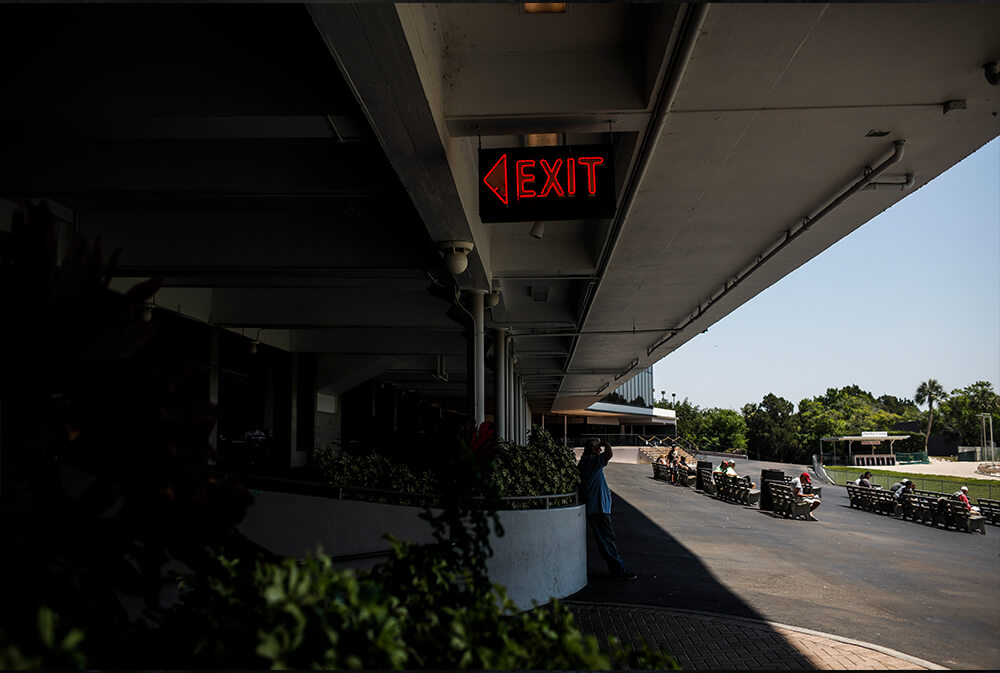
I don’t know what it will be like, not seeing all of them,” Jolene says. It’s not clear whether she’s talking about her coworkers on the counter, track staples like Holland or the dogs, another field of eight being led down the track to the starting box.
“Yeah, it will be different,” Holland says.
In a weak moment, she’ll admit that she has her family but no friends away from the track, that they wouldn’t understand her life here. Jolene sees a customer wandering over to the counter, sighs and heads back to her station.
Like the Weavers, the Hollands have been in greyhound racing since bettors first put money down on dogs breaking from a box in the U.S. Cal Holland is 75 and the third generation in his family in the game. His grandfather started out in 1925 with a couple of dogs imported from England and another from Australia that he raced first in St. Louis and later, when his railroad job transferred him, in Denver. Cal’s father trained and raced greyhounds in Arizona. Uncles and extended family all found their way to the track.
“I wanted to go to college, but after high school I got offered a great job down in Miami, so I took it,” he says. “Never did go to college. Been in the business ever since. Met my wife at a track up in Boston — her family was in it — and when I got offered a great job in Phoenix, we put all our belongings on a Greyhound bus. That was 1960. I rode across country with my 12-gauge shotgun right beside me. I’d be arrested nowadays.
“There were years that I was travelling across the whole country every month, checking on kennels that I had here and in Denver and up in Kansas, Kansas City and Wisconsin — all these places. I was on the road — driving 200,000 miles a year — and greyhound racing was a really big thing. All that’s gone now, but it’s been gone for a while.”
Holland’s daughter and the elder of his two boys followed him into the business. His grandchildren know their way around the track and have pitched in, but they’ll be the last of the family to do so.
As for his own life at the track, he’s not waiting to be shown the door. “We all lease our kennels from Derby Lane,” he says. “The leases have always run for a year, from July 1 to June 30. But now they’re coming to us asking us to sign ones that are 18 months” — right up until the last race at Derby Lane — “and I’m not going to sign; I’m not going to renew. So it’s the end for me. June 30’s my last day.”
Peake interrupts over the loudspeakers. “One minute to post-time.”
Holland looks down at his program.
“My wife died a few years back,” he says. “I have a new lady in my life. And Cal Jr. [his eldest] committed suicide back in ’16. I had a stroke, so things changed for me before all this.”
The vote, that is. The ban. The unfathomable.
The Hollands are made of tough stuff and have soldiered on before. When Cal suffered the stroke, Cal Jr.’s son, Justin, stepped in and managed the kennel while his grandfather recovered. Less than two weeks after Cal Jr.’s death, Justin stood in the winner’s circle after a stakes race and fought back tears.
“We got a place on the water. I got a boat. Every morning I leave our place at dawn and I’m working in the kennels from 5:30 until the afternoon. Well, it’s just time that I get up in the morning and don’t come out here. The only reason that I stuck around this long is that I love the dogs. You get attached to them in a way that people that aren’t in this can never know.”
Jim Peake’s voice broke in and Holland’s head turned to the track, an involuntary movement, even Pavlovian.
“They’re off.”
Designed by Sasha Barkans. Edited by Evan Rosser.

